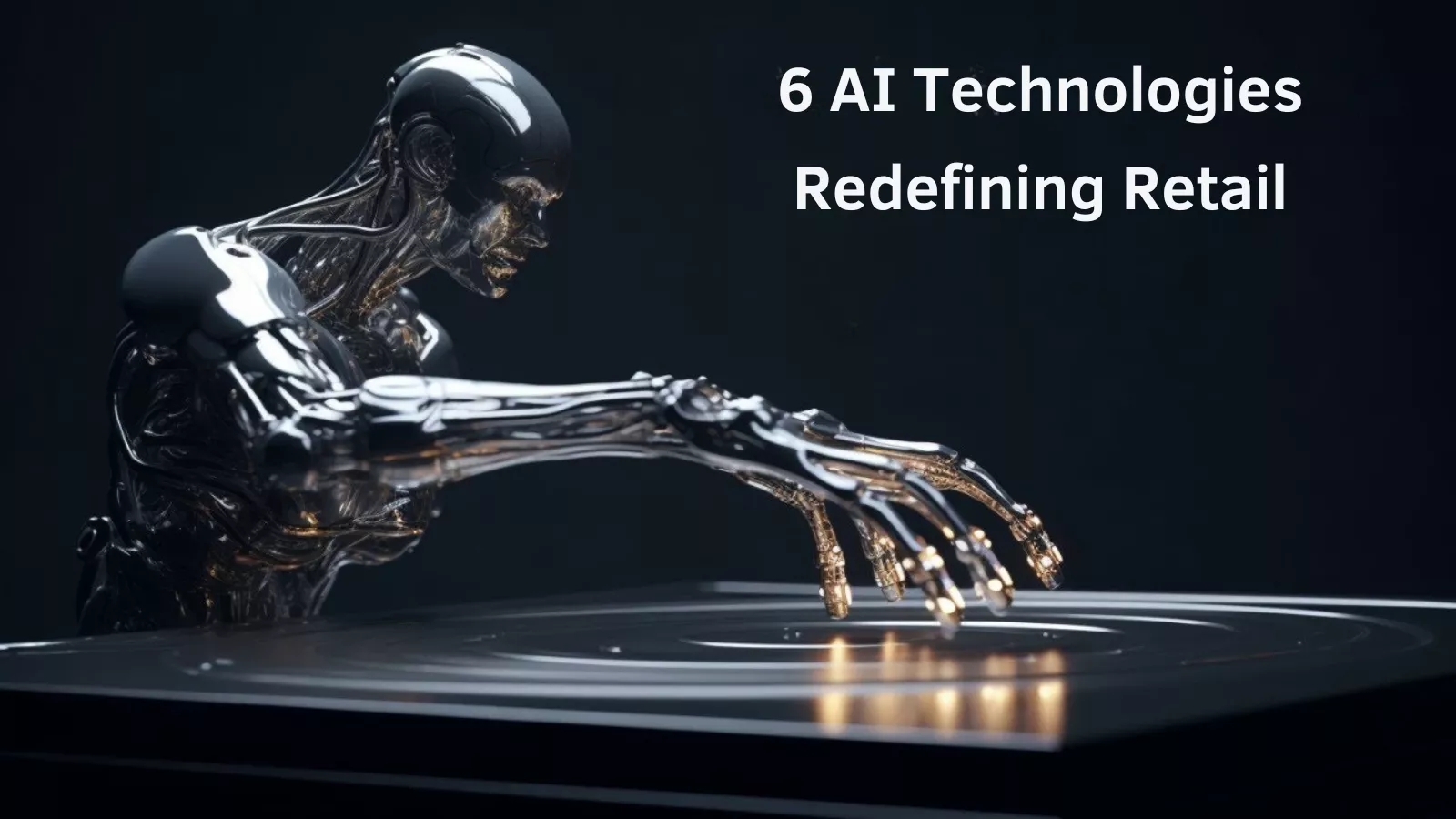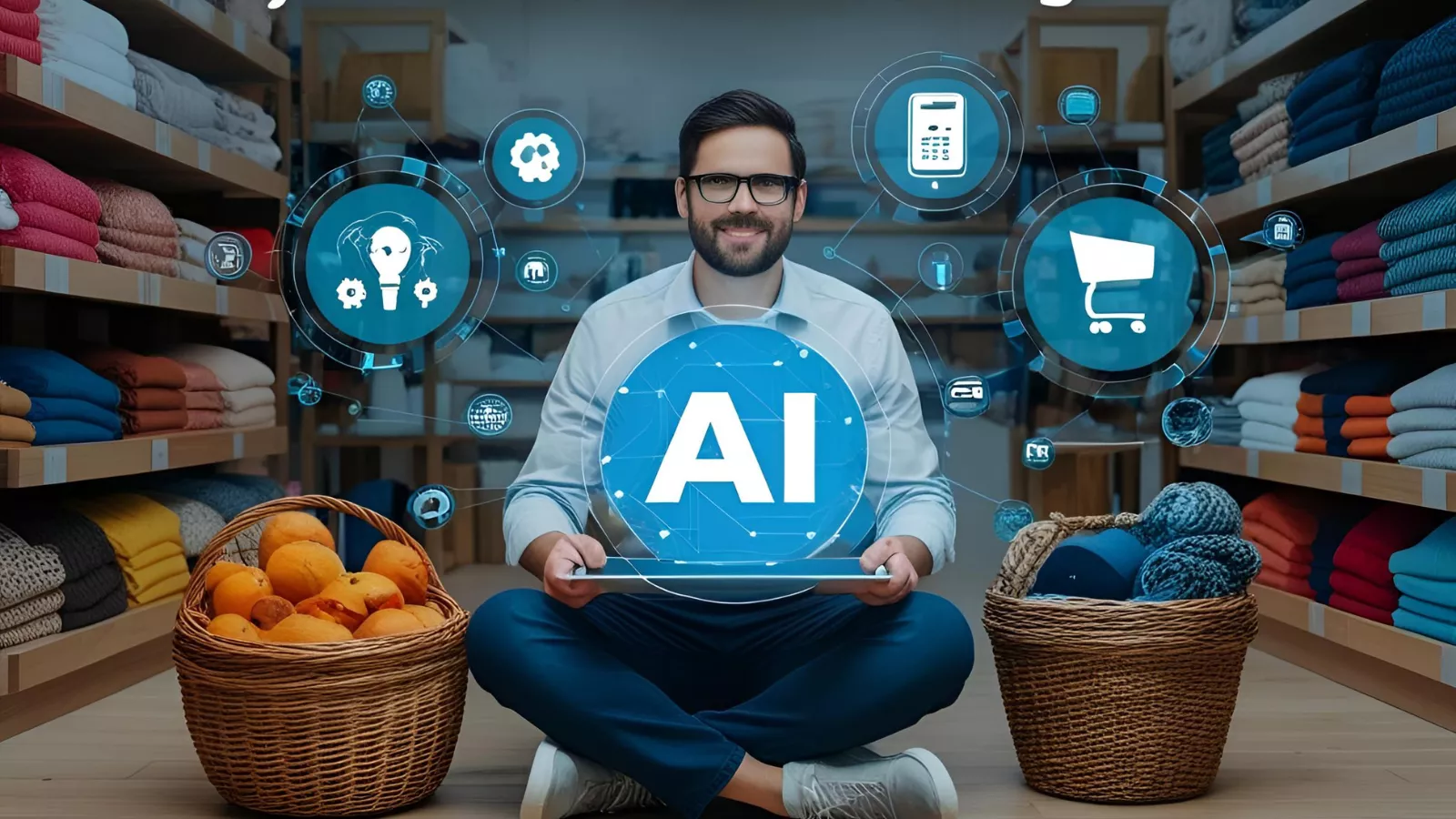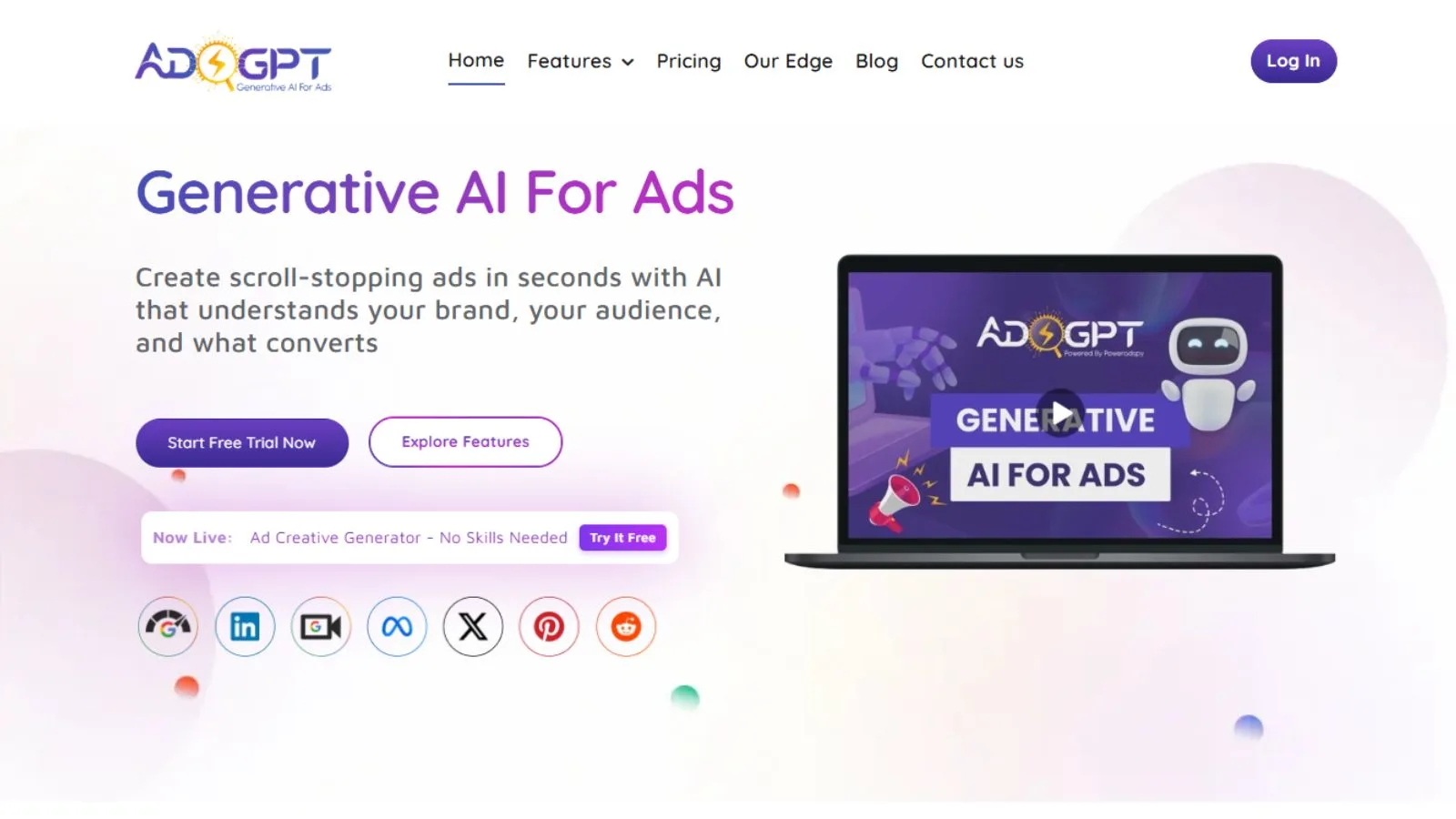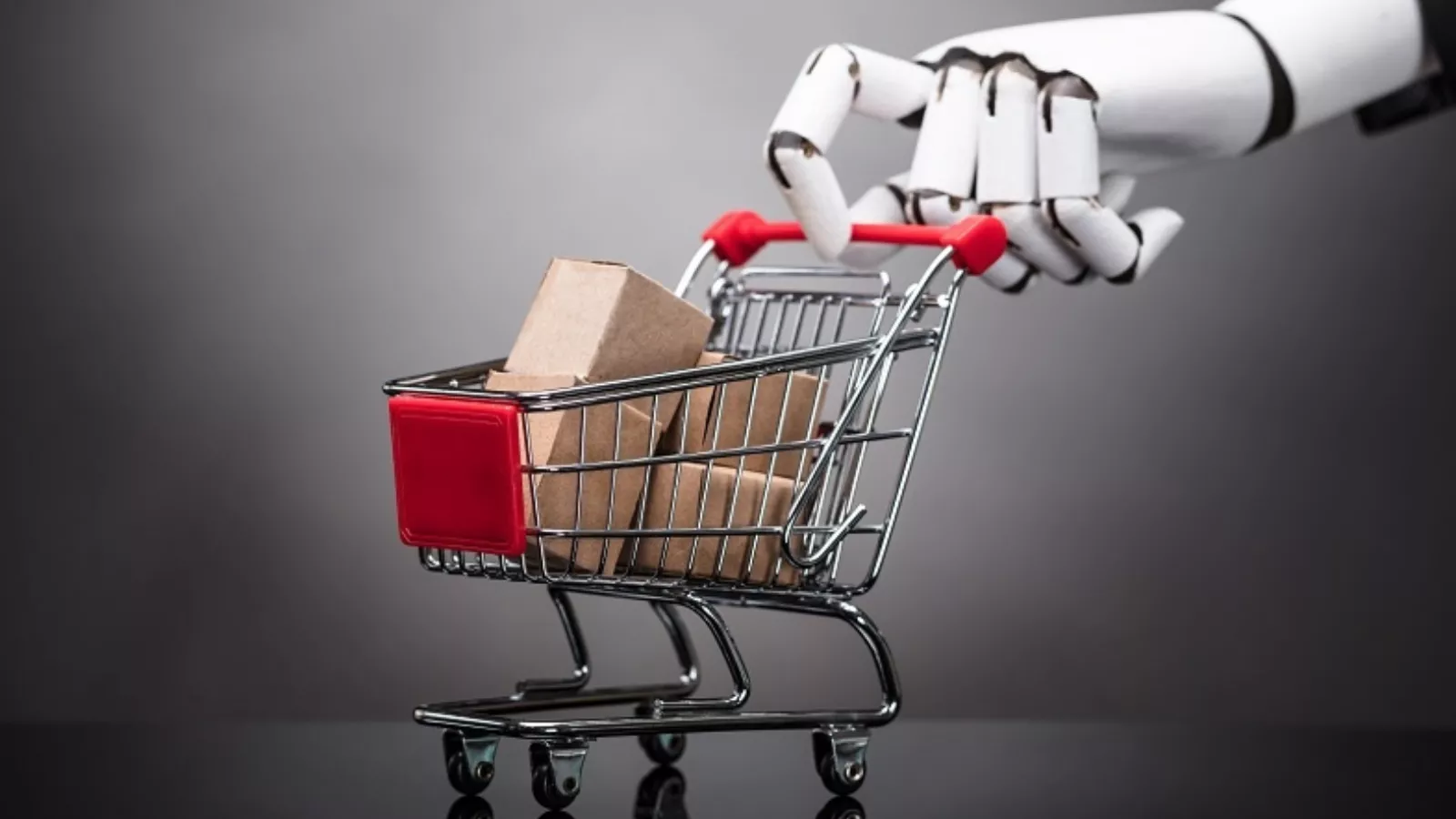
Ever wondered why your favorite store seems to know exactly what you want before you do? Or how an online shop can recommend the perfect product as if it’s been reading your mind? That’s the quiet power of AI in retail at work. Walk into a store today, and much of what feels seamless—from the chatbot that answers your late-night question to shelves that always seem stocked at the right time—is driven by intelligent systems working behind the scenes.
For retailers, this shift isn’t just a cool upgrade. It’s survival. Competition is intense, customer expectations keep rising, and traditional methods can’t keep up. In this article, we’ll look at how AI is reshaping the retail world, from sharper inventory planning to deeper customer loyalty. We’ll also dig into why modern marketing tools are becoming essential and what the road ahead looks like for brands ready to lean into this transformation.
In a hurry? Listen to the podcast now.
What Exactly Is AI In Retail?
 AI in retail refers to a suite of technologies that analyze data, automate tasks, and predict outcomes, essentially mimicking human intelligence on a previously unimaginable scale. AI is now the silent workhorse behind many everyday retail operations. These systems operate behind the scenes as smart assistants, sifting through vast amounts of data to understand customer habits, optimize stock levels, and create personalized advertising campaigns.
AI in retail refers to a suite of technologies that analyze data, automate tasks, and predict outcomes, essentially mimicking human intelligence on a previously unimaginable scale. AI is now the silent workhorse behind many everyday retail operations. These systems operate behind the scenes as smart assistants, sifting through vast amounts of data to understand customer habits, optimize stock levels, and create personalized advertising campaigns.
For example, when you shop online and see product recommendations tailored to your tastes, you are witnessing machine learning in action. The integration of AI in retail isn’t just a trendy upgrade—it’s a practical tool that drives real results, from increasing sales to reducing operational costs.
But what are the specific AI technologies making waves in both brick-and-mortar stores and e-commerce platforms?
Let’s break them down.
6 AI Technologies Redefining Retail
 From chatbots that never sleep to algorithms predicting tomorrow’s trends, AI in retail is reshaping how businesses operate. These technologies aren’t just futuristic concepts; they’re already driving efficiency, creativity, and customer loyalty.
From chatbots that never sleep to algorithms predicting tomorrow’s trends, AI in retail is reshaping how businesses operate. These technologies aren’t just futuristic concepts; they’re already driving efficiency, creativity, and customer loyalty.
Let’s explore six innovations that are rewriting the rules of modern retail.
1. Chatbots
Chatbots are the 24/7 sales associates of the digital era. They answer customer queries instantly, guide users through product catalogs, and handle transactions. Unlike traditional customer support that operates within limited hours, chatbots are always available, ensuring that no customer is left waiting. This constant availability not only enhances customer satisfaction but also frees up human employees to focus on more complex issues.
2. Predictive Analytics
Imagine having a crystal ball that forecasts trends, predicts demand, and even suggests what products might become the next big hit. That’s what predictive analytics offers to the retail industry. By analyzing historical sales data, seasonality, and market trends, AI-powered analytics can forecast future product demands with remarkable accuracy. This capability allows retailers to manage their inventory more efficiently, reducing overstock and stockouts.
3. Machine Learning
Machine learning drives many AI in retail. These systems continuously learn from new data, refining their recommendations and strategies. Whether optimizing pricing strategies or suggesting the next best product for a customer, machine learning helps retailers make smarter, data-driven decisions. The beauty of this technology lies in its ability to evolve, ensuring that strategies remain relevant as customer behavior changes.
4. Computer Vision
Computer vision involves using cameras and sensors to monitor and analyze the physical environment. In retail, this technology is used to track inventory levels in real-time, analyze customer movement in stores, and monitor how shoppers interact with displays. By providing actionable insights into in-store behavior, computer vision helps retailers optimize store layouts and improve the overall shopping experience.
5. Voice Assistants
Voice-activated assistants are transforming the way customers search for products and make orders. By allowing shoppers to speak their needs instead of typing them, voice assistants add a layer of convenience that is especially appreciated in today’s fast-paced world. Whether checking store hours, locating products, or placing orders, voice assistants are making the shopping experience more interactive and user-friendly.
6. Generative AI
Generative AI, exemplified by tools like AdsGPT, takes marketing creativity to a new level. Instead of relying solely on human creativity, generative AI can craft tailored marketing content, including slogans, visuals, and call-to-action messages—all within seconds. By analyzing customer data and current market trends, these systems generate campaigns that resonate with target audiences, proving that AI is not just a backend support system but also a front-line creative force.
Why Retailers Can’t Afford To Ignore AI?
 The integration of AI in retail isn’t merely a technological upgrade—it’s a strategic imperative. Here’s why modern retailers are increasingly turning to AI to stay competitive:
The integration of AI in retail isn’t merely a technological upgrade—it’s a strategic imperative. Here’s why modern retailers are increasingly turning to AI to stay competitive:
- Personalization That Feels Human: AI systems analyze browsing histories, purchase patterns, and social media behavior to suggest products that align with individual tastes. It creates a shopping experience uniquely tailored to each customer, fostering brand loyalty.
- Inventory That Never Runs Out (or Overflows): Predictive analytics help retailers maintain optimal inventory levels, reducing excess stock and avoiding stockouts.
- Instant Support, Anytime: Chatbots and automated support tools provide instant responses to customer inquiries, resolving issues in real-time.
- Budget-Friendly Operations: AI significantly reduces operational costs by automating routine tasks like pricing updates and inventory tracking.
- Smarter Decision-Making: AI-driven analytics tools provide a comprehensive view of sales trends, customer behaviors, and market dynamics, allowing retailers to make data-driven decisions.
- Fraud Detection You Can Trust: AI systems detect suspicious activities in real-time, preventing fraud before it causes significant damage.
How AI Tools Like AdsGPT Elevate Retail Marketing?
 AI is transforming how brands understand and communicate with their customers, and AdsGPT sits right at the center of that shift. It acts like a creative and analytical partner that helps retailers move faster, make smarter decisions, and create campaigns that truly connect with shoppers.
AI is transforming how brands understand and communicate with their customers, and AdsGPT sits right at the center of that shift. It acts like a creative and analytical partner that helps retailers move faster, make smarter decisions, and create campaigns that truly connect with shoppers.
Here are the five core features that make AdsGPT valuable for modern retail marketing:
- Smart Audience Targeting
AdsGPT analyzes customer behavior, interests, and purchase patterns to help retailers deliver ads that feel relevant and personal. It reduces wasted spend by narrowing in on people who are most likely to engage. - Automated Ad Creatives
From headlines and ad copy to product descriptions and social captions, AdsGPT generates ready-to-use content in seconds. This helps marketing teams keep up with fast campaign cycles without compromising quality. - Multi-Platform Adaptation
AdsGPT can rework a single idea into platform-specific versions for social, search, display, or video. It keeps your message consistent while tailoring it to each channel’s style and audience. - Performance-Driven Recommendations
Instead of manually digging through data, AdsGPT reviews campaign performance and suggests what to improve, scale, or replace. This helps retailers refine their ads in real time. - Easy Creative Variations for A/B Testing
AdsGPT creates multiple versions of any ad element—hooks, headlines, angles, prompts—so teams can run faster tests and find what resonates best.
Read More
How To Create High-Converting Ecommerce Ads With AI?
Navigating The Pitfalls Of AI Adoption
Despite its many advantages, adopting AI in retail comes with challenges:
- Privacy Concerns: Retailers must implement robust cybersecurity measures to protect customer data.
- Technology Upgrades and Integration: Many retailers operate on legacy systems that may not be fully compatible with modern AI technologies.
- Maintaining the Human Touch: While AI enhances efficiencies, retailers must ensure that human interactions remain part of the customer experience.
- Staff Training and Change Management: Employees must be trained to work alongside AI, ensuring a smooth transition into AI-enhanced operations.
AI In Retail: Lessons From Leading Brands
 Some of the world’s most successful brands have already integrated AI into their operations with impressive results.
Some of the world’s most successful brands have already integrated AI into their operations with impressive results.
- Amazon: Amazon uses AI to recommend products, optimize delivery routes, and predict which items will become popular.
- Starbucks: Starbucks’ Deep Brew initiative personalizes drink suggestions for customers based on previous orders and local preferences.
- Walmart: Walmart employs AI to optimize supply chain logistics and enhance customer experiences through cashier-less checkouts.
These brands showcase how AI in retail isn’t just about automation—it’s about creating smarter, more efficient, and highly personalized shopping experiences. As AI technology continues to evolve, retailers of all sizes can learn from these industry leaders to enhance their strategies. The key is to embrace AI’s potential and leverage it to drive innovation, boost customer satisfaction, and stay ahead in a rapidly changing market.
Conclusion
AI in retail is no longer a futuristic concept—it’s a game-changer that’s already redefining how businesses operate. From personalized customer experiences to smarter inventory management, AI-driven innovations are shaping the future of commerce. Retailers who embrace marketing with AI can create highly targeted campaigns, optimize customer engagement, and boost sales with minimal effort.
As competition intensifies, having a solid marketing strategy AI approach is essential for brands looking to stand out. Whether it’s AI for marketing or streamlining operations, AI in retail is the key to staying ahead in an evolving digital landscape. The future belongs to retailers who leverage AI to enhance efficiency, creativity, and customer satisfaction.
FAQs
- How can small retailers start using AI without a big budget?
Many tools offer scalable plans, so smaller businesses can begin with basic features like automated chat support or simple recommendation engines before moving into advanced analytics. - Does AI replace store employees?
No. AI handles repetitive or data-heavy tasks, while employees continue to play a key role in customer service, relationship-building, and in-store experiences. - How long does it take to see results from AI-driven marketing?
Most retailers notice improvements within weeks, especially in areas like ad targeting, creative testing, and content production. Bigger transformations, like supply chain optimization, take longer. - Is AI useful for retailers with only physical stores?
Yes. AI can help with foot-traffic insights, demand forecasting, inventory accuracy, and even store layout optimization using computer vision systems. - What kind of customer data is needed to make AI tools effective?
Basic information, such as browsing behavior, purchase history, and engagement patterns, is usually enough for most AI platforms to deliver meaningful insights and personalized experiences.




